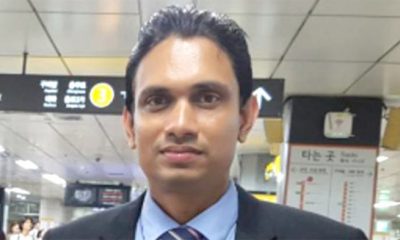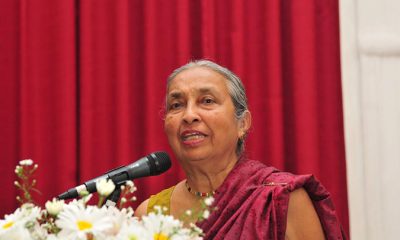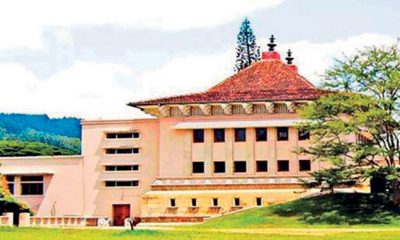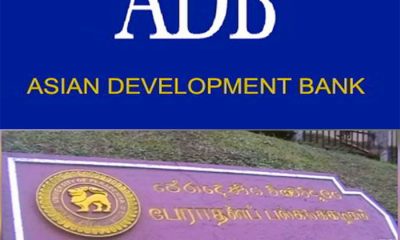Features
Professor A.D.T.E. Perera
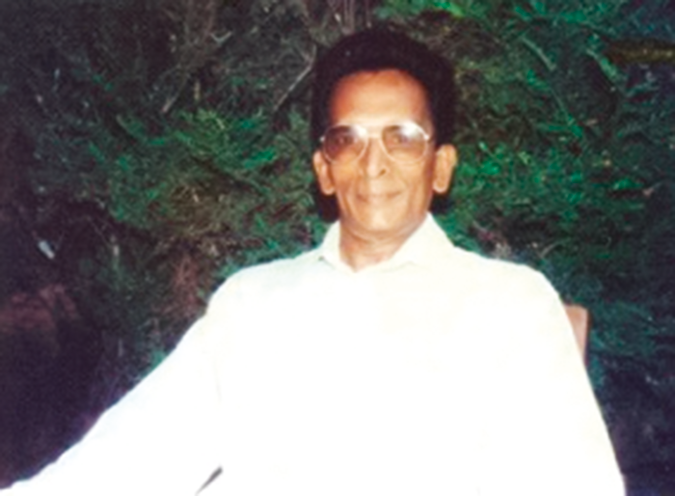
An Appreciation
Prof. A.D.T.E. Perera who passed away recently was an eminent scholar of Buddhist Art and Archeology was born on April 29, 1936 at the Sarikkamulla village, Panadura. His father was D.B. Perera, a planter, and his mother was Pearl Danthanarayana.
Perera had his primary and secondary school education at St. Sebastian’s College, Moratuwa, and attended Sunday school (Daham Pasela) which was close to his house at Sri Taxala Vidyalaya, It was at an impressionable age and at this venue that Perera was able to form a close bond with a well-known archaeologist and scholar monk Ven. Medauyangoda Wimalakirthi Thero, who resided at a nearby temple named ‘Sirinandana Pirivena’. Perera was a good artist in his younger days. But he didn’t continue the interest on this subject.
University of Peradeniya
In the late 1950s Perera gained entry to the University of Peradeniya. He studied Pali, Sanskrit, and Buddhist philosophy for a Bachelor’s degree in Arts. He was in the last batch of students of Prof. Senarath Paranavitana, who served as the Professor of Archeology at the University of Ceylon from 1957 to 1961.
Upon leaving the University in 1962 Perera served as a teacher at both the St. Sebastian’s College and Sri Taxala Vidyalaya for a short period of time. Thereafter he worked as a Press Officer for the government for a limited period and also as a sub-editor of the ‘Ceylon Daily News’, during the era of Esmond Wickremesinghe.
His scholarly interests in Buddhism led him to establish contact with Ven. Baddegama Wimalawansa Thero, then Head of the ‘Odey Pansala’ at Maradana. Also known as Sri Lanka Vidyalaya. He did some lecturing at this temple cum school.
In the mid-1960s Perera married Sujatha Perera, whom he had first met at the Sri Taxala Vidyalaya.
Assistant Editor of the Encyclopedia of Buddhism
During the Late 1960s Perera had a rapid rise in his career when he was appointed as an Assistant Editor of the Encyclopedia of Buddhism with the approval of Prof. Gunapala Malalasekara who was the Chief Editor. The Office was based at the Peradeniya University. During the 1970s A.D.T.E. Perera’s articles were published in English and Sinhala newspapers on topics relating to Archeology and Buddhist Art.
He delivered lectures at the National Museum, the Royal Asiatic Society, and the YMBA, etc. He also took part in a Radio Ceylon program moderated by Lucien Bulathsinhala, a reputed playwright, author, and stage drama producer. And also together with Alec Robertson (the well known Buddhist lay preacher) Perera delivered talks on Buddhism related subjects in English on Radio Ceylon. Perera’s writings dealt with concepts underlying Asanagara, Sandakada Pahana, and the rock carvings at Isurumuniya and Sigiriya, etc.
He gained public attention with his pronouncements based on pioneering research that Sigiriya was built by the legendary King Ravana whose name finds mention in the Hindu Sanskrit epic ‘Ramayana’. Arthur C. Clarke, the world-renowned Science fiction writer, upon reading the writings of A.D.T.E. Perera gathered some ideas from Perera for his popular television series ‘Mysterious World’. Their friendship continued since then.
Australian National University (ANU)
In 1979 Perera travelled to Canberra, Australia with his family to pursue post-graduate studies at the Australian National University (ANU) under the supervision of Prof. A.L. Basham. He submitted his thesis entitled ‘Evolution of Buddha Image’. During his stay in Canberra, he delivered Guest Lectures at the Department of Asian Civilizations, ANU and attended several international conferences held in Australia. He also delivered lectures to the Sinhala community based in Canberra at ANU on Saturdays in 1979. He was also a part time teacher at the Canberra Grammar School in 1979.
In the early 1980s upon returning to Sri Lanka, Perera participated at various International Conferences held in Nepal, India, Hong Kong, etc.
Prof. Perera’s articles were regularly published in various international journals such as ‘East and West’ in Rome, ‘Studies in Indo – Asian Art and Culture, New Delhi, and CHISSAN, Tokyo, and also in Magazines ‘The Buddhist’, ‘World Buddhism’, ‘Journal of the Royal Asiatic Society, Sri Lanka branch’ and newspapers e.g., Sunday Observer, Daily News, Island, etc. and Sinhala newspapers.
In 1984 A.D.T.E. Perera co–founded the international Buddhist journal ‘World of Buddhism’ together with the famous monk Venerable Mapalagama Wipulasara Maha Thera (1925 – 2000), who was both an Artist and Sculptor (primarily Buddha statues). He continued with the ‘World of Buddhism’ Journal as the Editor until his wife passed away in 2012. It was an indefatigable effort on his part to create Buddhist Opinion via this Journal.
He obtained his Master’s Degree from the University of Kelaniya and the DLitt degree (Doctor of Letters) from the Malwatte Chapter of the Siam Nikaya.
Perera also kept close contact with leaders of other religions. In the late 80s, he visited the Ambassador College, U.S.A, founded by Herman W. Armstrong, on the invitation of the late. Dr. Hoeh of California and delivered several lectures at this institution. In the 1990s he also delivered several talks at the Sai Baba Center at Barnes Place, Colombo 07, and visited Puttaparthi, Andhra Pradesh, India, the ashram of Sri Sathya Sai Baba in 1992.
In the early 90s, A.D.T.E. Perera was appointed as an Associate Professor at the University of New Mexico, USA, Department of Philosophy. There too he continued his scholarly work. He also attended as a Guest Research Fellow at the Department of Disarmament and Development, UNO New York.
Upon returning to the Island in the late 90s he joined the ‘Island’ newspaper and in addition, he served as an Editor of the Sinhala Dictionary. There he prepared the ‘Etymological Sinhala English Dictionary’ with the collaboration of Dr. Saddhamangala Karunaratna, former Commissioner of Archaeology (1979 – 1983). During mid 90s Dr. Perera worked at Wesley College, Colombo for a short period.
In the 1990s his path crossed that of the well-regarded Scholar monk and the First Chancellor of the University of Ruhuna, Ven. (Prof.) Paravahara Pannananda Mahanayaka Thero, who resided at the Padanagara Viharaya, Maradana, It was a propitious meeting. Favourable for in-depth Buddhist scholarly work.
‘Buddhism in Ancient Arabia and Israel’
Thereafter both scholars began to work and conduct research jointly on esoteric topics. Through intense research, they were able to discover that Buddhism was the earliest religion in the Arabian region. This finding caused a sensation in academia. In 2013, A.D.T.E. Perera’s book named ‘Buddhism in Ancient Arabia and Israel’ won the Buddhist literary award in 2014. It was later translated into Sinhala. by Ven. Meerigama Gothama Thero at the Dharmendraramaya Temple, Mt. Lavinia..
All Buddhist Congress of Democrats
In 2000 A.D.T.E. Perera founded a Buddhist organization named ‘All Buddhist Congress of Democrats’, (‘ABCD’) at the Padanagara Viharaya, Maradana.
German Dharmaduta Society
Prof. Perera also served as the Vice – President of the German Dharmaduta Society which maintains the Berlin Vihara in Germany and visited Mitirigala Nissarana Vanaya (all three institutions of which were founded by Asoka Weeraratna later known as Ven. Mitirigala Dhammanissanti Thero).
Professor A.D.T.E. Perera spent his entire life of 87 years (1936 -2023) devoted to the cause of both the nation i.e., Sri Lanka, and the Religion i.e., Buddhism. He supported the idea of ‘Rata, Jathiya, Agama’ with great conviction. His services are unparalleled.
Dr. Harischandra Wijayathunga
Features
The heart-friendly health minister

by Dr Gotabhya Ranasinghe
Senior Consultant Cardiologist
National Hospital Sri Lanka
When we sought a meeting with Hon Dr. Ramesh Pathirana, Minister of Health, he graciously cleared his busy schedule to accommodate us. Renowned for his attentive listening and deep understanding, Minister Pathirana is dedicated to advancing the health sector. His openness and transparency exemplify the qualities of an exemplary politician and minister.
Dr. Palitha Mahipala, the current Health Secretary, demonstrates both commendable enthusiasm and unwavering support. This combination of attributes makes him a highly compatible colleague for the esteemed Minister of Health.
Our discussion centered on a project that has been in the works for the past 30 years, one that no other minister had managed to advance.
Minister Pathirana, however, recognized the project’s significance and its potential to revolutionize care for heart patients.
The project involves the construction of a state-of-the-art facility at the premises of the National Hospital Colombo. The project’s location within the premises of the National Hospital underscores its importance and relevance to the healthcare infrastructure of the nation.
This facility will include a cardiology building and a tertiary care center, equipped with the latest technology to handle and treat all types of heart-related conditions and surgeries.
Securing funding was a major milestone for this initiative. Minister Pathirana successfully obtained approval for a $40 billion loan from the Asian Development Bank. With the funding in place, the foundation stone is scheduled to be laid in September this year, and construction will begin in January 2025.
This project guarantees a consistent and uninterrupted supply of stents and related medications for heart patients. As a result, patients will have timely access to essential medical supplies during their treatment and recovery. By securing these critical resources, the project aims to enhance patient outcomes, minimize treatment delays, and maintain the highest standards of cardiac care.
Upon its fruition, this monumental building will serve as a beacon of hope and healing, symbolizing the unwavering dedication to improving patient outcomes and fostering a healthier society.We anticipate a future marked by significant progress and positive outcomes in Sri Lanka’s cardiovascular treatment landscape within the foreseeable timeframe.
Features
A LOVING TRIBUTE TO JESUIT FR. ALOYSIUS PIERIS ON HIS 90th BIRTHDAY

by Fr. Emmanuel Fernando, OMI
Jesuit Fr. Aloysius Pieris (affectionately called Fr. Aloy) celebrated his 90th birthday on April 9, 2024 and I, as the editor of our Oblate Journal, THE MISSIONARY OBLATE had gone to press by that time. Immediately I decided to publish an article, appreciating the untiring selfless services he continues to offer for inter-Faith dialogue, the renewal of the Catholic Church, his concern for the poor and the suffering Sri Lankan masses and to me, the present writer.
It was in 1988, when I was appointed Director of the Oblate Scholastics at Ampitiya by the then Oblate Provincial Fr. Anselm Silva, that I came to know Fr. Aloy more closely. Knowing well his expertise in matters spiritual, theological, Indological and pastoral, and with the collaborative spirit of my companion-formators, our Oblate Scholastics were sent to Tulana, the Research and Encounter Centre, Kelaniya, of which he is the Founder-Director, for ‘exposure-programmes’ on matters spiritual, biblical, theological and pastoral. Some of these dimensions according to my view and that of my companion-formators, were not available at the National Seminary, Ampitiya.
Ever since that time, our Oblate formators/ accompaniers at the Oblate Scholasticate, Ampitiya , have continued to send our Oblate Scholastics to Tulana Centre for deepening their insights and convictions regarding matters needed to serve the people in today’s context. Fr. Aloy also had tried very enthusiastically with the Oblate team headed by Frs. Oswald Firth and Clement Waidyasekara to begin a Theologate, directed by the Religious Congregations in Sri Lanka, for the contextual formation/ accompaniment of their members. It should very well be a desired goal of the Leaders / Provincials of the Religious Congregations.
Besides being a formator/accompanier at the Oblate Scholasticate, I was entrusted also with the task of editing and publishing our Oblate journal, ‘The Missionary Oblate’. To maintain the quality of the journal I continue to depend on Fr. Aloy for his thought-provoking and stimulating articles on Biblical Spirituality, Biblical Theology and Ecclesiology. I am very grateful to him for his generous assistance. Of late, his writings on renewal of the Church, initiated by Pope St. John XX111 and continued by Pope Francis through the Synodal path, published in our Oblate journal, enable our readers to focus their attention also on the needed renewal in the Catholic Church in Sri Lanka. Fr. Aloy appreciated very much the Synodal path adopted by the Jesuit Pope Francis for the renewal of the Church, rooted very much on prayerful discernment. In my Religious and presbyteral life, Fr.Aloy continues to be my spiritual animator / guide and ongoing formator / acccompanier.
Fr. Aloysius Pieris, BA Hons (Lond), LPh (SHC, India), STL (PFT, Naples), PhD (SLU/VC), ThD (Tilburg), D.Ltt (KU), has been one of the eminent Asian theologians well recognized internationally and one who has lectured and held visiting chairs in many universities both in the West and in the East. Many members of Religious Congregations from Asian countries have benefited from his lectures and guidance in the East Asian Pastoral Institute (EAPI) in Manila, Philippines. He had been a Theologian consulted by the Federation of Asian Bishops’ Conferences for many years. During his professorship at the Gregorian University in Rome, he was called to be a member of a special group of advisers on other religions consulted by Pope Paul VI.
Fr. Aloy is the author of more than 30 books and well over 500 Research Papers. Some of his books and articles have been translated and published in several countries. Among those books, one can find the following: 1) The Genesis of an Asian Theology of Liberation (An Autobiographical Excursus on the Art of Theologising in Asia, 2) An Asian Theology of Liberation, 3) Providential Timeliness of Vatican 11 (a long-overdue halt to a scandalous millennium, 4) Give Vatican 11 a chance, 5) Leadership in the Church, 6) Relishing our faith in working for justice (Themes for study and discussion), 7) A Message meant mainly, not exclusively for Jesuits (Background information necessary for helping Francis renew the Church), 8) Lent in Lanka (Reflections and Resolutions, 9) Love meets wisdom (A Christian Experience of Buddhism, 10) Fire and Water 11) God’s Reign for God’s poor, 12) Our Unhiddden Agenda (How we Jesuits work, pray and form our men). He is also the Editor of two journals, Vagdevi, Journal of Religious Reflection and Dialogue, New Series.
Fr. Aloy has a BA in Pali and Sanskrit from the University of London and a Ph.D in Buddhist Philosophy from the University of Sri Lankan, Vidyodaya Campus. On Nov. 23, 2019, he was awarded the prestigious honorary Doctorate of Literature (D.Litt) by the Chancellor of the University of Kelaniya, the Most Venerable Welamitiyawe Dharmakirthi Sri Kusala Dhamma Thera.
Fr. Aloy continues to be a promoter of Gospel values and virtues. Justice as a constitutive dimension of love and social concern for the downtrodden masses are very much noted in his life and work. He had very much appreciated the commitment of the late Fr. Joseph (Joe) Fernando, the National Director of the Social and Economic Centre (SEDEC) for the poor.
In Sri Lanka, a few religious Congregations – the Good Shepherd Sisters, the Christian Brothers, the Marist Brothers and the Oblates – have invited him to animate their members especially during their Provincial Congresses, Chapters and International Conferences. The mainline Christian Churches also have sought his advice and followed his seminars. I, for one, regret very much, that the Sri Lankan authorities of the Catholic Church –today’s Hierarchy—- have not sought Fr.
Aloy’s expertise for the renewal of the Catholic Church in Sri Lanka and thus have not benefited from the immense store of wisdom and insight that he can offer to our local Church while the Sri Lankan bishops who governed the Catholic church in the immediate aftermath of the Second Vatican Council (Edmund Fernando OMI, Anthony de Saram, Leo Nanayakkara OSB, Frank Marcus Fernando, Paul Perera,) visited him and consulted him on many matters. Among the Tamil Bishops, Bishop Rayappu Joseph was keeping close contact with him and Bishop J. Deogupillai hosted him and his team visiting him after the horrible Black July massacre of Tamils.
Features
A fairy tale, success or debacle

Sri Lanka-Singapore Free Trade Agreement
By Gomi Senadhira
senadhiragomi@gmail.com
“You might tell fairy tales, but the progress of a country cannot be achieved through such narratives. A country cannot be developed by making false promises. The country moved backward because of the electoral promises made by political parties throughout time. We have witnessed that the ultimate result of this is the country becoming bankrupt. Unfortunately, many segments of the population have not come to realize this yet.” – President Ranil Wickremesinghe, 2024 Budget speech
Any Sri Lankan would agree with the above words of President Wickremesinghe on the false promises our politicians and officials make and the fairy tales they narrate which bankrupted this country. So, to understand this, let’s look at one such fairy tale with lots of false promises; Ranil Wickremesinghe’s greatest achievement in the area of international trade and investment promotion during the Yahapalana period, Sri Lanka-Singapore Free Trade Agreement (SLSFTA).
It is appropriate and timely to do it now as Finance Minister Wickremesinghe has just presented to parliament a bill on the National Policy on Economic Transformation which includes the establishment of an Office for International Trade and the Sri Lanka Institute of Economics and International Trade.
Was SLSFTA a “Cleverly negotiated Free Trade Agreement” as stated by the (former) Minister of Development Strategies and International Trade Malik Samarawickrama during the Parliamentary Debate on the SLSFTA in July 2018, or a colossal blunder covered up with lies, false promises, and fairy tales? After SLSFTA was signed there were a number of fairy tales published on this agreement by the Ministry of Development Strategies and International, Institute of Policy Studies, and others.
However, for this article, I would like to limit my comments to the speech by Minister Samarawickrama during the Parliamentary Debate, and the two most important areas in the agreement which were covered up with lies, fairy tales, and false promises, namely: revenue loss for Sri Lanka and Investment from Singapore. On the other important area, “Waste products dumping” I do not want to comment here as I have written extensively on the issue.
1. The revenue loss
During the Parliamentary Debate in July 2018, Minister Samarawickrama stated “…. let me reiterate that this FTA with Singapore has been very cleverly negotiated by us…. The liberalisation programme under this FTA has been carefully designed to have the least impact on domestic industry and revenue collection. We have included all revenue sensitive items in the negative list of items which will not be subject to removal of tariff. Therefore, 97.8% revenue from Customs duty is protected. Our tariff liberalisation will take place over a period of 12-15 years! In fact, the revenue earned through tariffs on goods imported from Singapore last year was Rs. 35 billion.
The revenue loss for over the next 15 years due to the FTA is only Rs. 733 million– which when annualised, on average, is just Rs. 51 million. That is just 0.14% per year! So anyone who claims the Singapore FTA causes revenue loss to the Government cannot do basic arithmetic! Mr. Speaker, in conclusion, I call on my fellow members of this House – don’t mislead the public with baseless criticism that is not grounded in facts. Don’t look at petty politics and use these issues for your own political survival.”
I was surprised to read the minister’s speech because an article published in January 2018 in “The Straits Times“, based on information released by the Singaporean Negotiators stated, “…. With the FTA, tariff savings for Singapore exports are estimated to hit $10 million annually“.
As the annual tariff savings (that is the revenue loss for Sri Lanka) calculated by the Singaporean Negotiators, Singaporean $ 10 million (Sri Lankan rupees 1,200 million in 2018) was way above the rupees’ 733 million revenue loss for 15 years estimated by the Sri Lankan negotiators, it was clear to any observer that one of the parties to the agreement had not done the basic arithmetic!
Six years later, according to a report published by “The Morning” newspaper, speaking at the Committee on Public Finance (COPF) on 7th May 2024, Mr Samarawickrama’s chief trade negotiator K.J. Weerasinghehad had admitted “…. that forecasted revenue loss for the Government of Sri Lanka through the Singapore FTA is Rs. 450 million in 2023 and Rs. 1.3 billion in 2024.”
If these numbers are correct, as tariff liberalisation under the SLSFTA has just started, we will pass Rs 2 billion very soon. Then, the question is how Sri Lanka’s trade negotiators made such a colossal blunder. Didn’t they do their basic arithmetic? If they didn’t know how to do basic arithmetic they should have at least done their basic readings. For example, the headline of the article published in The Straits Times in January 2018 was “Singapore, Sri Lanka sign FTA, annual savings of $10m expected”.
Anyway, as Sri Lanka’s chief negotiator reiterated at the COPF meeting that “…. since 99% of the tariffs in Singapore have zero rates of duty, Sri Lanka has agreed on 80% tariff liberalisation over a period of 15 years while expecting Singapore investments to address the imbalance in trade,” let’s turn towards investment.
Investment from Singapore
In July 2018, speaking during the Parliamentary Debate on the FTA this is what Minister Malik Samarawickrama stated on investment from Singapore, “Already, thanks to this FTA, in just the past two-and-a-half months since the agreement came into effect we have received a proposal from Singapore for investment amounting to $ 14.8 billion in an oil refinery for export of petroleum products. In addition, we have proposals for a steel manufacturing plant for exports ($ 1 billion investment), flour milling plant ($ 50 million), sugar refinery ($ 200 million). This adds up to more than $ 16.05 billion in the pipeline on these projects alone.
And all of these projects will create thousands of more jobs for our people. In principle approval has already been granted by the BOI and the investors are awaiting the release of land the environmental approvals to commence the project.
I request the Opposition and those with vested interests to change their narrow-minded thinking and join us to develop our country. We must always look at what is best for the whole community, not just the few who may oppose. We owe it to our people to courageously take decisions that will change their lives for the better.”
According to the media report I quoted earlier, speaking at the Committee on Public Finance (COPF) Chief Negotiator Weerasinghe has admitted that Sri Lanka was not happy with overall Singapore investments that have come in the past few years in return for the trade liberalisation under the Singapore-Sri Lanka Free Trade Agreement. He has added that between 2021 and 2023 the total investment from Singapore had been around $162 million!
What happened to those projects worth $16 billion negotiated, thanks to the SLSFTA, in just the two-and-a-half months after the agreement came into effect and approved by the BOI? I do not know about the steel manufacturing plant for exports ($ 1 billion investment), flour milling plant ($ 50 million) and sugar refinery ($ 200 million).
However, story of the multibillion-dollar investment in the Petroleum Refinery unfolded in a manner that would qualify it as the best fairy tale with false promises presented by our politicians and the officials, prior to 2019 elections.
Though many Sri Lankans got to know, through the media which repeatedly highlighted a plethora of issues surrounding the project and the questionable credentials of the Singaporean investor, the construction work on the Mirrijiwela Oil Refinery along with the cement factory began on the24th of March 2019 with a bang and Minister Ranil Wickremesinghe and his ministers along with the foreign and local dignitaries laid the foundation stones.
That was few months before the 2019 Presidential elections. Inaugurating the construction work Prime Minister Ranil Wickremesinghe said the projects will create thousands of job opportunities in the area and surrounding districts.
The oil refinery, which was to be built over 200 acres of land, with the capacity to refine 200,000 barrels of crude oil per day, was to generate US$7 billion of exports and create 1,500 direct and 3,000 indirect jobs. The construction of the refinery was to be completed in 44 months. Four years later, in August 2023 the Cabinet of Ministers approved the proposal presented by President Ranil Wickremesinghe to cancel the agreement with the investors of the refinery as the project has not been implemented! Can they explain to the country how much money was wasted to produce that fairy tale?
It is obvious that the President, ministers, and officials had made huge blunders and had deliberately misled the public and the parliament on the revenue loss and potential investment from SLSFTA with fairy tales and false promises.
As the president himself said, a country cannot be developed by making false promises or with fairy tales and these false promises and fairy tales had bankrupted the country. “Unfortunately, many segments of the population have not come to realize this yet”.
(The writer, a specialist and an activist on trade and development issues . )




